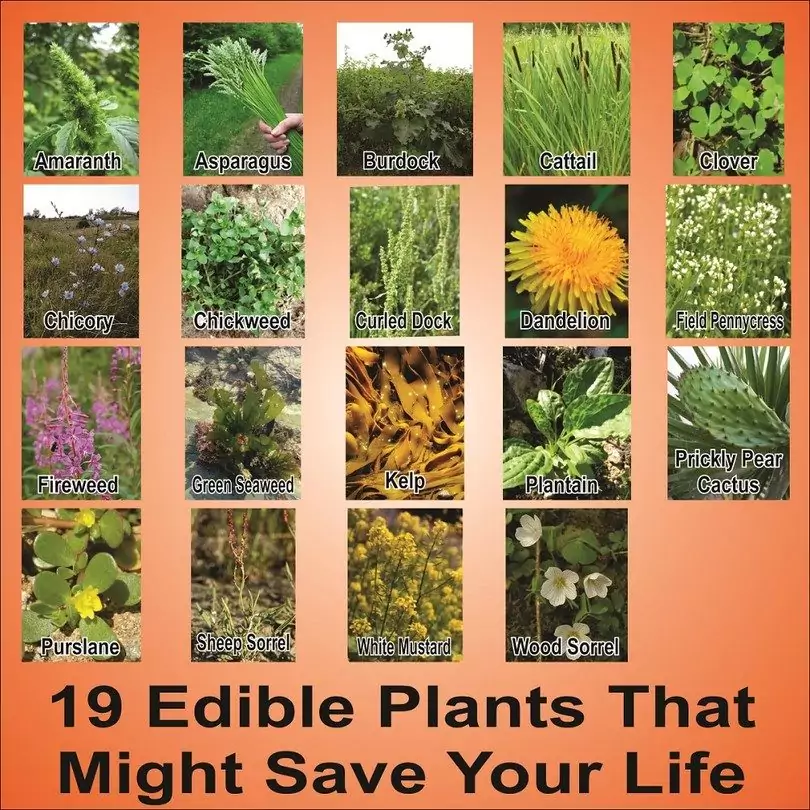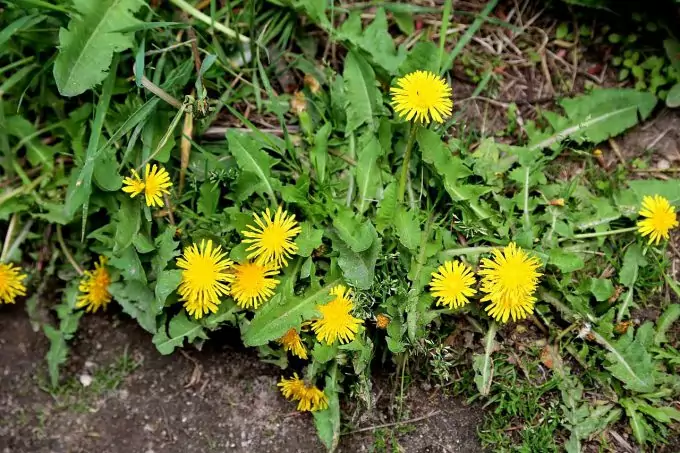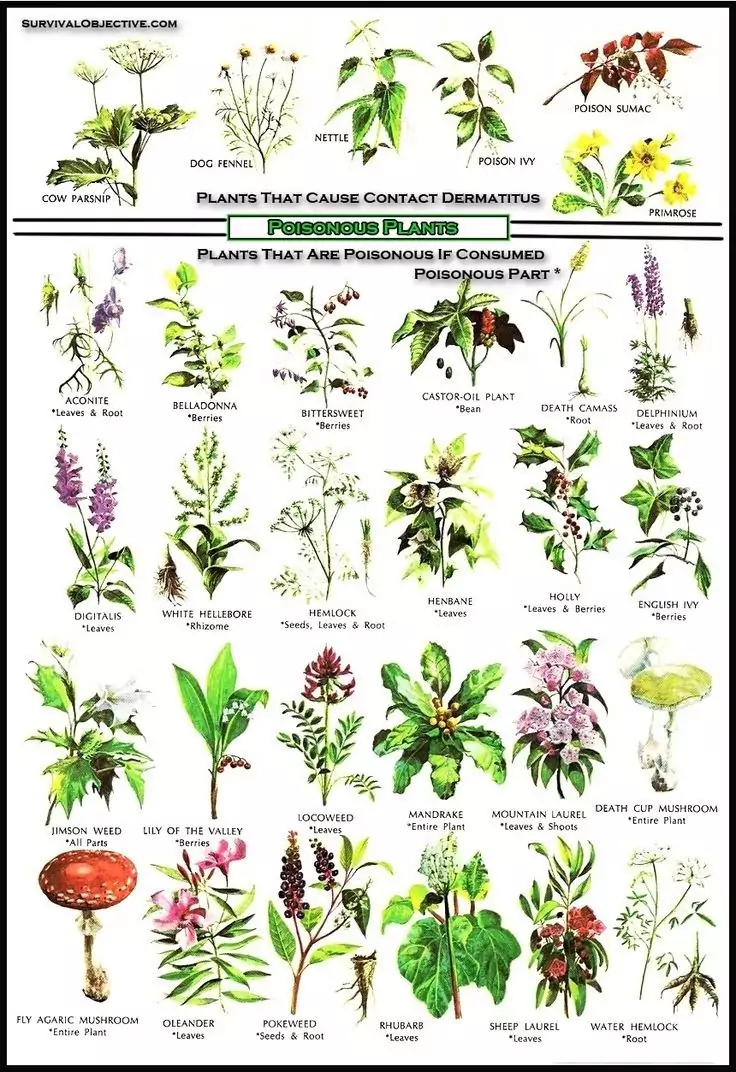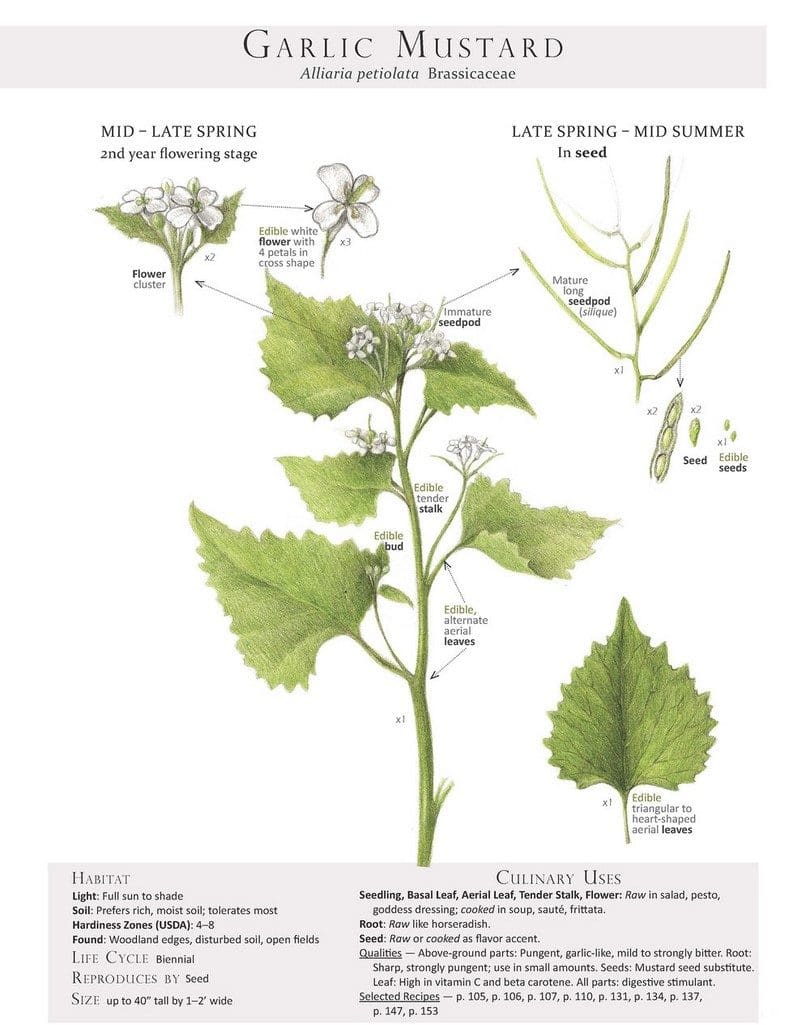Knowing what wild plants you can eat and other things to do when disasters strike will minimize the difficulty to survive and will let you live a normal daily life. It is unfortunate that we often cannot see trouble looming in the horizon, until it is already in front of us. Being prepared usually provides an adequate advantage for survival not just in the wild but in our very own backyard. We must know what plant resources are available for us to use when the proper time comes.
Knowledge of plants and their primary uses are part and parcel of survival skills which are practical know-hows and are essential for one’s survival.
See also: Bushcraft Wilderness Survival Skills: Making Use of What You Have
Most plants that we do not know of, which are scattered almost everywhere, are considered medicinal and fit for human consumption. Taking free food from the wild is regarded as an ability to be self-sufficient. We must know where to look and how to prepare wild edible plants provided by nature. Looking for plants that can be eaten or used for medicinal purposes depends on where we live. In humid and tropical regions most edible wild plants can be found in clearings that have direct contact with the sun. In dry areas, majority of wild edible plants can be found near the water.

Places that are regularly cleared or cleaned often have edible plants that are not cultivated, like dandelions, plantain, wood sorrel dead-nettle and grass. Grass is edible with intensely sweet and bitter flavor. Grass below 6” is easy to ingest, and those that are above 6” are often chewed to extract juice and then are spitted out.
Grass can also be made into juice by using a hand-operated wheatgrass juicer. Below are some wild edible plants that can be seen in the backwoods, and which can be safely used for food or other medicinal purposes.
List of edible wild plants
Dandelion (taraxacum officinale)
Dandelion can be steamed whole. Its center greens that are young can be eaten raw. The best part of the plant is its flower.

The best way to eat the plant is to remove the green base of the flower to remove the white sap which is bitter. This is one of the plants you can eat in the wild with leaves that have a sweet filling that you can find in abundance in the wild.
Chickweed (stellaria media)
Chickweed plants are entirely edible and all its parts can be consumed.

When eaten, chickweed tastes like sweet grass.
Wood Sorrel (oxalis spp)
Whole wood sorrel plants can be consumed raw. It has refreshing acid flavor that is nice to the palette. Most variants of wood sorrel have pinkish flowers. Stems can be eaten but avoid the red part and the leaves because they are bitter. It is a common plant that can be usually seen clearings, lawns and in the deep wilderness.

Consumption of this wild plant must be moderate because it has great oxalic level content, which can cause gastrointestinal ailments in taken in large quantities.
Herbit (lamium ampllexicaule)
This is another wild plant which is wholly edible and can be eaten raw. It tastes like mild mint with a tinge of a grassy sweet flavor. Before eating a herbit, it is recommended that you avoid its stems by removing the tops.

The herbit comes in a huge carpet formation usually in the early times of the year.
Dead-nettle (lamium purpureum)
It is a plant which is almost the same like the herbit and is eaten like as a herbit is eaten.

It also grows in abundance like a huge carpet on the ground mostly during spring time.
Plantain (plantago lanceolate)
The young leaves in the center of this plant are eaten raw and have a good salty flavor.

English plantain variety and common plantain are quite similar to each other.
Sow thistle (sonchus spp)
Sow thistle is like dandelion, with yellow flowers that can be prepared in the same process and can be eaten raw.

Sow thistle is more prickly-looking than dandelion.
Wild onion (allium spp)
Wild onion plants are commonly found on areas that are regularly mowed.

Bunches of wild onions are normally used like scallions.
Cress (cardamine spp)
Cress is a wild plant that can often be seen in the cities. It is part of the mustard family, hence when you eat the leaves raw; the taste would be like that of a slight mustard flavor.

Full-grown cress plants are steamed like mustard greens.
Blackberries (Rubus fruticosus)
Most wild berries are not safe for human consumption, with the exemption of blackberries which are 100% edible and safe. Blackberries have long thin stems with green jagged leaves. They are abundant in spring and can be found clustered around its bush.

Blackberries are already ripe from the months of August to September.
Asparagus (Asparagus officinalis)
Asparagus is mostly found in Europe and in some North African regions. When this plant is ingested it gives the urine a peculiar smell. Wild asparagus that has more slender stems are sold in grocery stores. This plant is a great source of vitamin C, potassium, vitamin B6 and thiamine.

Best to be consumed when boiled or can be eaten raw like the standard asparagus we normally use for food at home.
Elderberries (Sambucus)
Elderberry shrubs grow to about 10 feet, which produces a large quantity of food. It has 7 central leaves that are stretched out from the stems which have a long jagged edged appearance. The white flowers of this plant form a cluster that looks like an umbrella.

Berries from the elderberry plant are ripe by the month of September. Elderberries must be properly processed for use to prevent intoxication, but they can be used to treat flu and colds. The berries can be processed into home-made jellies.
Pine (Pinus)
Pine comes in different varieties and species. It is a good source of food supply and can likewise be used for some medicinal purposes.

Native American use grounded pine to treat scurvy. Pine is rich in vitamin C and can also be made into tea by boiling a bowl of water and dropping in a few pine needles.
Kudzu (Puenraria lobata)
Most of the parts of kudzu are edible that has medicinal properties. It can be used to treat inflammation, migraines and headaches.

Leaves and roots from the plant can be boiled, steamed or eaten raw.
Daylily (Hemerocallis)
Daylily is a common plant that is scattered in many places. It has bright orange flowers with surrounding foliage that comes straight out of the ground.

The flower buds can be eaten even before they open or it can be cooked like any other ordinary vegetable.
Pecans (Carya illinoinensis)
Pecan trees grow to an average of 20 feet to 30 feet tall. Others sometimes reach a height of 100 feet tall. The leaf structure of the pecan has a long and smooth edge. This plant has its origins in the south central part of North America.

Pecan trees that are found in the wild can provide a nutritious and filling food cache.
Research before eating any wild plants
To fully understand how wild plants can help in our survival, we must do a research and get ourselves a handbook on plants to serve as our guide. This will help us sort out which ones are safe and which ones are not. Suffice it to say that we must also know how the plant looks like, so it is vital to have a wild plant guidebook on hand.
There may come a time when all we have in the wild is our guts and wits; hence, it is always to better to remember to look for berries on trees. Most berries on trees are edible; they are soft and look shriveled. Also be on the lookout for ornamental trees that have attractive flowers, since the flowers will often lead you to edible berries, plums or crab apples.

Majority of nuts in the wild are healthy, and fit to be consumed by humans. Nuts can be usually found underneath trees. Acorns are in abundance under the oak tree’s leaves and can be consumed without need for further process. It is also sound to note that edible fruit bearing trees can usually be found in the open, mostly on road sides, in forest clearings and nearby bodies of water.
Keep in mind that fruit trees need the sun to be able to bear their fruits, so finding fruit bearing trees deep in the forest is nil. Fruit bearing trees commonly found in the open are wild apples, persimmons, mulberries, etc.
There you have our simple guide on what plants to look for and can be eaten in the wilderness should you get lost in the forest or happened to just want to live with nature’s abundance.
See more of our tips on how to survive in the wilds for added information you might need someday.

















You need to be a member of Earth Changes and the Pole Shift to add comments!
Join Earth Changes and the Pole Shift